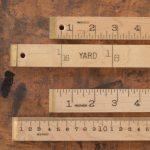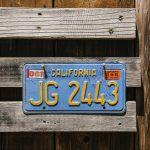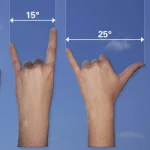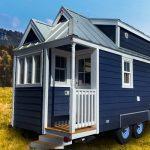Air Compressor Size Chart And Selection Guide
An air compressor is a special mechanical device that increases a specific gas pressure by increasing the volume, just like a pump does. The wrong air compressor size can lead to pressure transients leading to very high energy costs and maintenance of the component and eventually cost an individual or business millions of dollars per year.
To maintain and use efficient air compressor systems, it is inevitable to account for the size and type of air compressor and that is where an air compressing size chart and selection guide comes in.
Air Compressor Size Chart: Important Measurements
There are a couple of measurements that are utilized to determine the air compressing size or simply the size of an air compressor. Let’s look at some of the key measurements as follows;
Cubic feet per minute
The first measurement should be the CFM, which stands for cubic feet per minute. This measurement is arrived at by calculating the area then substituting the fpm(feet per minute) with the cubic feet value after it is squared. The CFM determines the size of an air compressor that is most suitable.
Pressure measurement
Another significant measurement to take is the pressure measurement. Too much pressure can, unfortunately, lead to a deadly and costly mistake and suddenly drive the compressor into a surge. It can cause equipment ruin, high repair costs. It can also be a health risk for the workers involved.
If you are working with a heavy machine, it would be advisable to go for a high-pressure compressor as opposed to a low-pressure compressor.
Duty cycle
Another important item worth considering is the Duty cycle. In air compressing, the term duty cycle refers to the time it takes for an air compressor pump to completely fill the tank with air. This means, how often the compressor will be cycling on and off while pumping.
The Duty cycle percentage is calculated by the use of the compressor time (time on + time off) at a particular pressure. It’s important to understand the units of measurements well in order to efficiently work with an air compressor. The measurements are mostly based on cubic meters.
Air Compressing Size Chart: Determining CFM Requirements
Use the chart below to determine the level of continuous CFM rating you need for your air compressor. Important to note that air tools are normally rated as “Average CFM.” This average is based on one-quarter of a duty cycle. This can create challenges for tools that are continually at work such as air grinders, and orbital sanders.
If your tool is for continuous use, then please make a point of multiplying by 4 the Average CFM” to get the correct CFM rating.
| Air Tool | Average CFM @ 90 PSI |
| Speed Saw | 5 |
| Orbital Sander | 6-9 |
| Angle Disc Grinder – 7″ | 5-8 |
| Brad Nailer | 0.3 |
| Chisel/Hammer | 3-11 |
| Cut-Off Tool | 4-10 |
| Dual Sander | 11-13 |
| Framing Nailer | 2.2 |
| Hydraulic Riveter | 4 |
| Needle Scaler | 8-16 |
| Nibbler | 4 |
| Mini Die Grinder | 4-6 |
Here is a more elaborate chart of air requirements for common pneumatic tools
Please note that this chart serves as a guide only, based on different brands’
| Tool | CFM @ Load | Recommended CFM |
| Wrenches | ||
| 3/8″ Impact Wrench 1/2″ Impact Wrench 3/4″ Impact Wrench | 8-36 9-42 9-55 | 30-40 CFM 30-40 CFM 30-40 CFM* |
| 1″ Impact Wrench | 9-102 | 60-70 CFM* |
| #5 Spline Impact Wrench | 60-95 | 100 CFM |
| Ratchets | ||
| 1/4″ Ratchet 1/2″ Ratchet3/8″ Ratchet | 10-20 15-2311-24 | 30-40 CFM 30-40 CFM30-40 CFM |
| Drills | ||
| 1/2″ Drill 3/8″ Drill | 17-35 13-44 | 30-40 CFM 30-40 CFM |
| Grinders | ||
| 1/4″ Die Grinder | 6-40 | 30-40 CFM |
| Angle Grinders (5″)Vertical Grinder | 16-7650-93 | 60-70 CFM60-70 CFM |
| Sanders | ||
| Tire Buffer Orbital Sander | 13-15 14-22 | 30-40 CFM 30-40 CFM |
| Polishing Sander | 22-39 | 60-70 CFM |
| Percussive | ||
| Air Hammer (Zip Gun)Scalers Engraving Pens | 7-304-15 1-5 | 30-40 CFM30-40 CFM 30-40 CFM |
| Reciprocating Saw | 6-51 | 60-70 CFM |
| Walk Behind Saw | 90-92 | 100 CFM |
| Concrete | ||
| Clay Digger 30/35 lb. Pavement Breaker 60 lb. Pavement Breaker | 36-47 48-52 64-70 | 60-70 CFM 60-70 CFM 60-70 CFM |
| 90 lb. Pavement Breaker | 62-85 | 100 CFM |
Air Compressor Sizing & Selecting
Check out the charts below for service shop tools and body shop tools
Body Shop Tools
| How Many | Type of Tool | CFM Single | CFM Total |
| N/A | Impact Wrench, 1/2″ Drive | 3 | N/A |
| 2 | Impact Wrench, 3/4″ Drive | 7 | 14 |
| 2 | Impact Wrench, 1″ Drive | 10 | 20 |
| 2 | Tire Changer w/Inflator | 4 | 8 |
| 2 | Grease Gun | 4 | 8 |
| 1 | Oil Pump | 4 | 4 |
| 1 | Parts Washer ( Air-agitated) | 2 | 2 |
| 4 | Lift (in-ground) 8000 lbs ( Add 1 CFM for each additional 1000 lbs.) | 6 | 24 |
| N/A | Air Jack | 4 | N/A |
| N/A | Cabinet Blaster w/5/64 Nozzle | 7 | N/A |
| N/A | Cabinet Blaster w/1/8 Nozzle | 15 | N/A |
| N/A | Cabinet Blaster w/5/32 Nozzle | 20 | N/A |
| N/A | Other Tools/Equipment | N/A | N/A |
| Total CFM in Service Shop | 80 |
Service Shop Tools
| How Many | Type of Tool | CFM Single | CFM Total |
| N/A | “DA ” Sander | 12 | N/A |
| N/A | 6″ Grinder | 10 | N/A |
| N/A | Panel Cutter | 8 | N/A |
| N/A | Plasma Cutter | 6 | N/A |
| N/A | Spray Gun, Touch-up | 4 | N/A |
| N/A | Spray Gun, Professional | 9 | N/A |
| N/A | Spray Gun, HVLP | 11 | N/A |
| N/A | Paint Shaker | 3 | N/A |
| N/A | Respirators (Per Man) | 4 | N/A |
| N/A | Other Tools/Equipment | N/A | N/A |
| Total CFM in Service Shop | N/A |
How to determine the maximum air pressure
This is the formula used to calculate the maximum air pressure for an air compressor
Maximum pressure = Tank volume in cubic feet multiplied by standard pressure during one cycle, multiplied again by cranks per minute.
That is, Maximum pressure = Tank volume X Standard pressure X Cranks per minute
To achieve accurate results, begin by converting the capacity of the tank to cubic feet from cubic meters. Next, start up the air compressor, take measurements of the load and unload cycles on the tank gauge. With the help of a stopwatch, note how long it takes from the second the compressor begins running to the time it stops. If the compressor has been off, fill the tank to the maximum first before you start recording.
Hey, come on now. Please don’t be intimidated by this formula, you absolutely need not memorize anything whatsoever especially if intense calculations are not your cup of tea! Of course, it is in such situations that our good air compressing size chart comes in. So you can now breathe a sigh of relief, forget about this weird maths and look up at the chart to help you select the most suitable air compressing device according to your needs.
Air compressor Selection Guide
There are various things you need to think about before you finally select the air compressing system that works best for you. For example, you need to analyze the volume and inlet pressure that you require. If your compressing needs are based on heavy-duty tools, you will require a compressor with maximum air pressure depending on the energy consumption.
It is also important that you get to understand different air compressor types. For instance, piston type compressors rely on a special motor that builds up new air pressure when the existing pressure gets finished. They keep running continuously to deliver a consistent air flow rate. The pressure in two-stage compressors on the other hand should always be greater than the atmospheric pressure for proper function. The two-stage compressor works in two stages just like the name suggests, it compresses air using one piston and uses the other to move compressed air from medium size tanks.
Finding the best air compressor
Whether you are purchasing a stationary air compressor or a portable air compressor, remember that it is always good to know the air requirements by calculating the air capacity and air volume so that you can determine the size. For larger tools such as pneumatic tools with large pipe diameters, consult your auto shop attendant as these types need a special size air compressor to ensure maximum flow of air. There are standard sizes too.
Air compressing safety
Consider the safety factor to the workers operating the air compressor before you even make the purchase. A very small air compressor, for example, might put you at risk of damaging the machines especially if you are going to use it in an area that requires a large compressor. As far as safety is concerned, portable compressors require extra care to avoid dropping or banging them.
In terms of durability, oil-lubricated compressors are more durable as compared to oil-free compressors. They are a bit more pricey though. They are also best suited for impact wrenches.
Energy efficiency
Electric air compressors are more energy efficient compared to belt-driven compressors. They are mainly used to run larger models of gasoline engines as they pump more gallons per minute on each square inch. The air flow rate determines the air power and air output, which are key factors when it comes to performance
Lifespan
The quality of the air hoses determines the lifespan of air compressors. Always go for high quality air filters and hoses when shopping for air tools.
Conclusion
When shopping for a compressor, buy one with the inlet pressure in mind. This is because too much pressure will ruin a small power air compressor thus rendering it useless. Remember an air compressing size chart will save you a lot while shopping. Regardless of the use, a size chart is a key part of ensuring you get to purchase a proper compressor for the job.
Remember there are several types of air compressors serving different purposes, so please be sure to select and buy according to your intended purpose.
Did you find this guide helpful or would you like to ask some questions? Kindly like and leave a comment in the comments section and please feel free as well to share the tips with your friends.
Picture in this post by Autoweek
More related Car/house Size Charts
- Barbie Doll Size : What are different sizes of Barbie ?
- Blanket sizes chart : blanket sizes and dimensions in inches & cm
- Tablecloth size chart – What are standard tablecloth sizes ?
- How Many Meters Are In A Yard?
- How Many Centimeters are 8 Inches?
- Knife Sizes and Different Types
- 4 Inches is How Many Centimeters?
- Average Pick-Up Truck Size and Dimensions
- Light Bulb Base Sizes : What size light bulb base do I need?
- Tesalate Towel Size Guide
- Car Parking Space: What Is The Average Size?
- Light bulb Size : What are the different and standard bulb sizes?
- Duvet Sizes: What is a Standard-Size Duvet?
- License Plate Size US Dimensions
- Single Car Garage Size and Dimensions
- How High Is A Story?
- What is my Driving Gloves Size?
- How Much Does 1 Cup Of Rice Weigh?
- Cast Iron Skillet Sizes: What Size Do I Need?
- Dollar Bills Size Chart
- Pizza Sizes: Which One to Order?
- How To Measure A Foot Without A Ruler
- Wine Glass Size Chart
- Tiny Houses Size Charts
- How Many Inches Are In 20 Centimeters?
- How To Measure 1 Meter Without A Ruler?
- Nightstand Size and Dimensions for Bedroom
- Lamp Shade Size Guide – What size lampshade do I need?




























